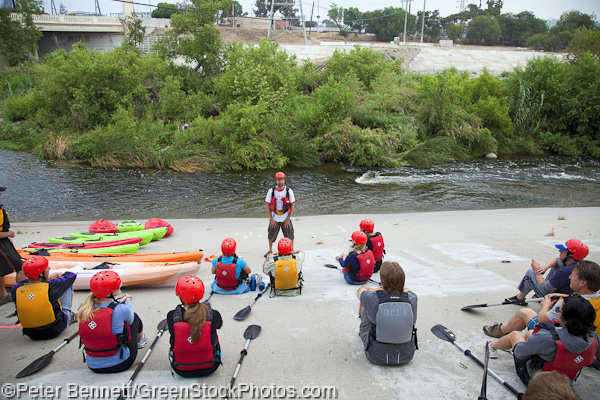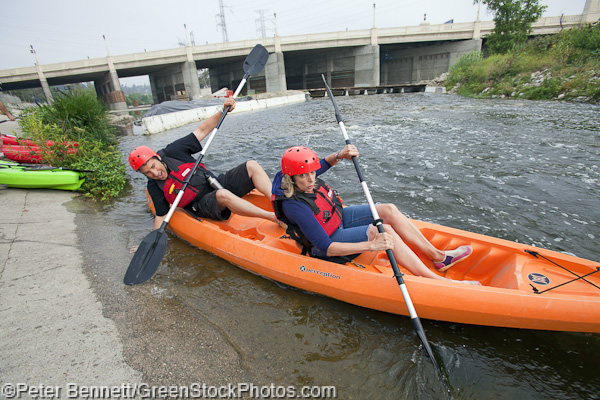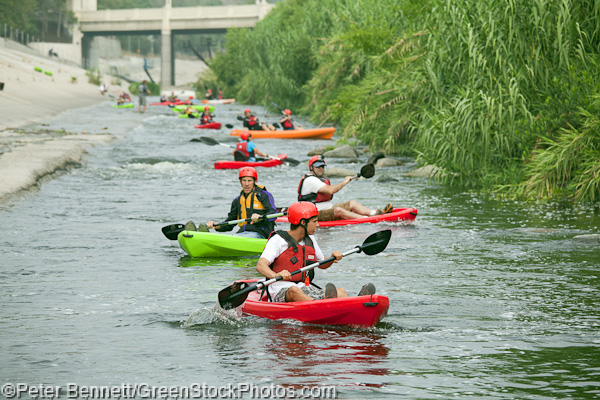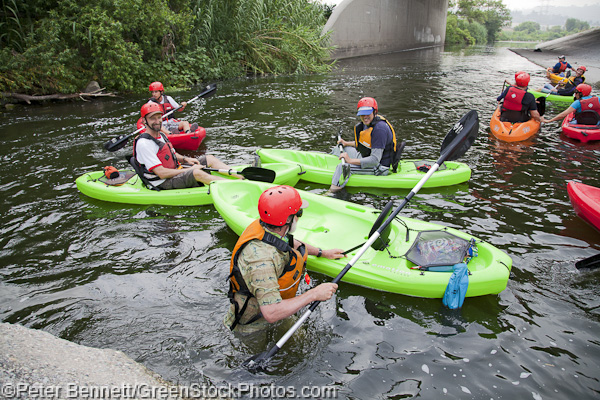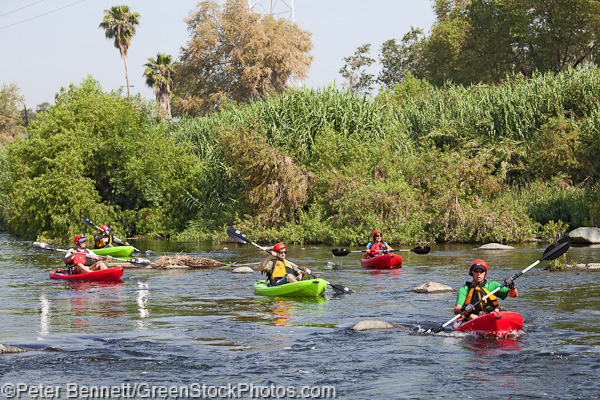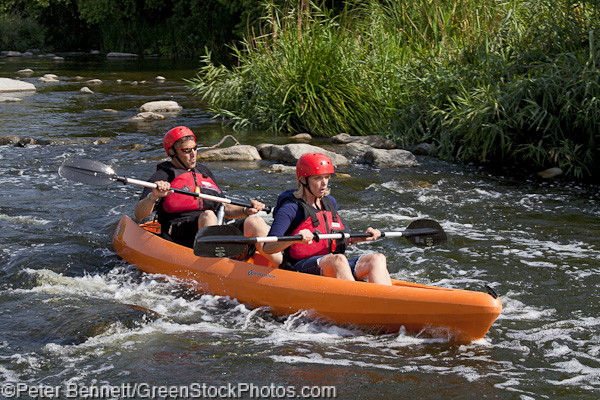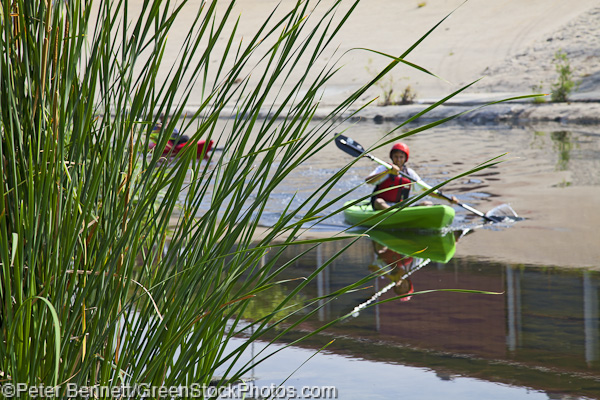Kayaking the mighty LA River
The LA River is a River. As obvious as that may sound, the truth is most people don’t really think of the Los Angeles River as an actual river. They are probably more familiar with the river’s movie roles such as the Governator barreling down its corridor on a motorcycle in Terminator 2 or the cast of Grease singing, dancing and racing along its flat bed and beveled sides.
It may be hard to believe that the same concrete channel you see as you approach LAX from above, cutting a winding swathe through the heart of Los Angeles, is also a beautiful and tranquil riparian landscape with a rich population of waterfowl and a number of whitewater rapids. But a recent program has in fact opened up the river to the public to see close up and first hand this “other” river, and to enjoy all that it has to offer.
On Memorial Day, the Los Angeles River/Glendale Narrows Recreation Zone Pilot Program opened up along a 2.5 mile section in the Elysian Valley, one of the two “soft-bottomed” stretches of the river that has not been paved over. The program allows the public, unrestricted recreational use for the first time in 80 years, including kayaking, walking, bird-watching, and fishing during the Summer months.
Recently I had the chance to follow along as 15 or so eager river sojourners were led down the aforementioned stretch of the river by George Wolfe, LA River pioneer and founder of LA River Expeditions. I first photographed George back in 2008 when he led a three day flotilla of kayaks and canoes down 51 miles of the river, quite illegally, to prove that the river was in fact a navigable waterway, a designation the EPA finally gave it in 2010 that granted Federal protection under the Clean Water Act and ultimately led to the accessibility the public currently has.
The early morning sky was overcast as the day’s travellers sat on the riverbank near Rattlesnake Park and listened as George went over safety precautions and proper ways to paddle and guide the kayaks. Although a couple of the participants were river veterans, most were novices, and as they pushed off and entered the water, the reality that they were actually in the river hit their faces.
After everyone was in the water, the group floated down a long straightaway and headed to the first bit of rapids, a small chute and probably a good warm up for the trip. But even this humble bit of whitewater tumbled one of the kayakers into the water and forced him to scramble back into his craft. Luckily in the soft-bottomed sections, the river is rarely deeper than a few feet so there is not much danger to be had.
Keeping up with the kayakers was a bit of a challenge and had me running along the river’s edge for bits and then scampering to my car to set up at another location downstream. Along the Glendale Narrows, the river is pretty wide, but a long strip of heavy underbrush divides the river and forces the currents to snake back and forth from one side of the island to the other along the river’s banks. At one section, I brazenly tried to cross through one of these islands to catch a glimpse of the group on its other side. A big mistake as there are no paths and trying to traverse the 30 foot strip without a machete gave me multiple scratches, a few thorns in my leg and a nasty little case of poison oak, that I am even now still scratching as I write this. Never even made it to the other side to see them.
About 2 hours later, the group pulled into the take out point just above Egret Park, the last section before the river becomes fully concreted and heads off to downtown. The boaters at this point had the look of experienced river travellers, smiling and confident as they disembarked their craft next to the arrowed sign marked BOAT EXIT. After hauling up their boats to the nearby bike path, George gave one final talk to the group, reminding them to spread the message that the river is now open to all, to use, to enjoy and to preserve. A great day for all!
